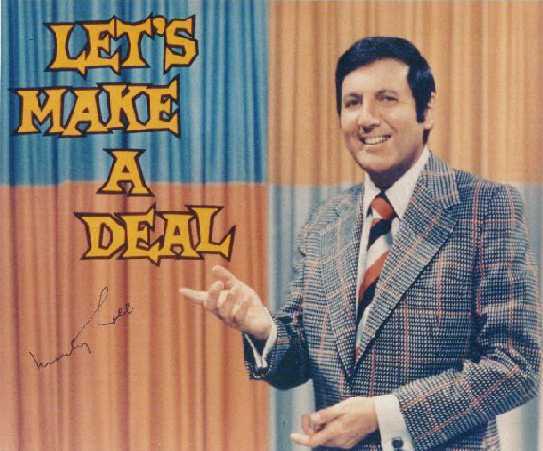11 open source business models


(Let's Make a Deal is back on TV, on CBS, starring Wayne Brady as Monty Hall. Cross-promotion is a great old business model, don't you think?)
In fact it's proprietary software that is lacking in imagination. They have only one business model:
- EULA Ware -- Give me money. Now go away. It doesn't work? Go away. You want your money back? Read your EULA, and go away. You want to see the software? Go away.
This has the virtue of simplicity. People pay and you really aren't required to give them anything. But it lacks a certain je ne sais quoi. Don't know what that is? You must work for a proprietary software company. (Go away.)
Telling people to pay you and go away worked for an amazingly long time. It sounds like it shouldn't. It sounds a bit like theft. But software is a miracle, and for decades EULA Ware was the only model there was.
Open source companies, on the other hand, they have to use their imagination. They can't feed people EULA Ware, so they must make money in other ways:
- Support Ware -- Pay us money and we'll support the software. We'll answer your questions. Or we'll try to. Over the phone, on the Web, whatever. Pay us enough and we'll come over. Red Hat likes this business model.
- Product Ware -- The software is free, you just buy the box it runs in. Android phones use this. So do some network routers. It's number two, but with a bullet.
- Cloud Ware -- Our software is in the clouds now. Pay us for what it does. The money goes into the cloud. Later it will rain on us. SugarCRM likes this business model.
- Project Ware -- Need something done? We'll do it with open source. Pay us for our work, and pay us for the project. IBM makes a ton on this business model.
- SaaS Ware -- Our software is SaaSy. You can rent it, by the hour, by the month, by the user. This is wildly popular. Zoho uses it. So do many other companies.
- Ad Ware -- This is a free version of SaaS Ware. You don't pay anything, the advertiser pays instead. Heard of The Google? This is their primary business model. ZDNet also uses this business model.
- Sugar Daddy Ware -- Our software has a sugar daddy. Firefox has Google. Eclipse has IBM. Open Office has Sun, or it did. So just use the stuff. Daddy will provide. We believe in daddy.
- Foundation Ware -- Our software has a foundation. It has lots of sugar daddies. Want to be one? Linux runs this way. So does Apache. Not to mention Wikipedia.
- Beg Ware -- Please give us money. We know you don't have to. But give us money anyway. Lots of little projects use this business model. Or pretend to.
- Tchotchke Ware -- Wanna buy a t-shirt? How about a bumper sticker? A pen?
- Let's Make a Deal Ware -- The programmers who wrote the software support it out of their own pockets until they can figure out something. Wordpress started this way. So did Drupal. Go by Sourceforge and you'll find tons of folks still using this business model.
The great thing about open source is you don't have to use just one business model. You can mix-and-match as you see fit. You can change. You can go to a more profitable model and buy a suit, or fork the code and go down the stack.
Or maybe you don't see your business model here. Maybe you have one of your own. Care to tell us about it in the talkbacks? Whisper it in our ear. It will just be between us.
This is what freedom is about. It's about having choices. You don't have to go to Sand Hill Road to get into the software business. If they tell you to go away, go open source and in time maybe they'll call you.
Then you can tell them to go away.